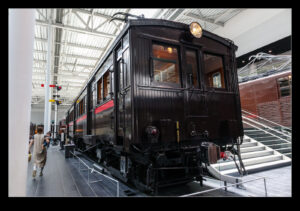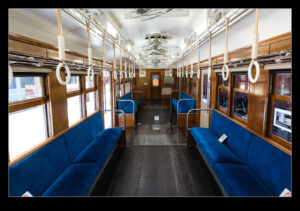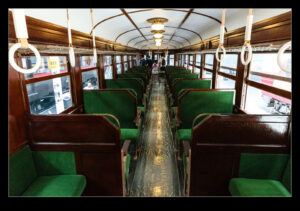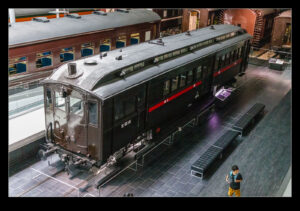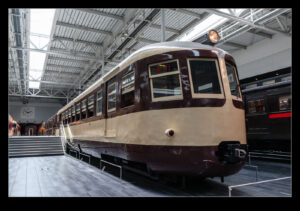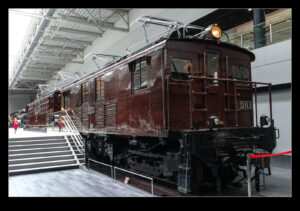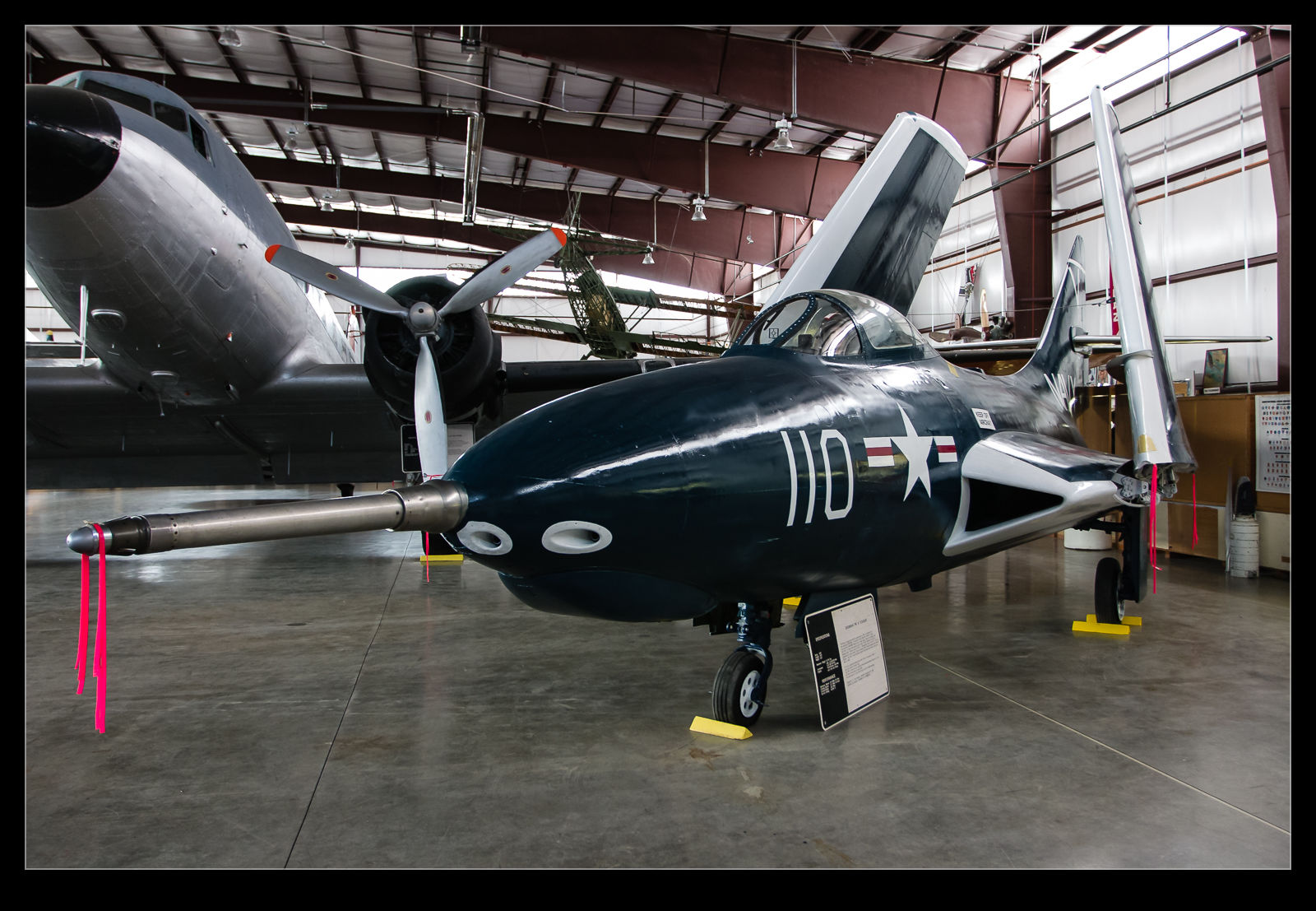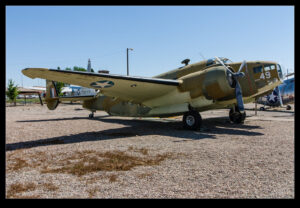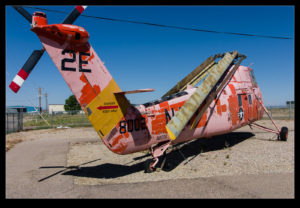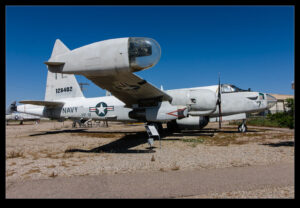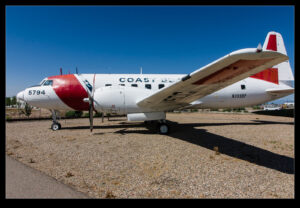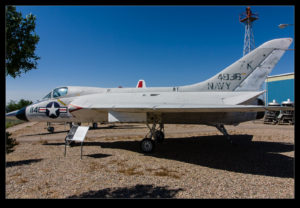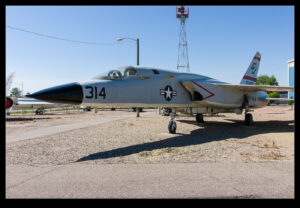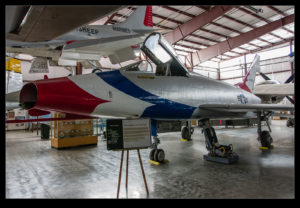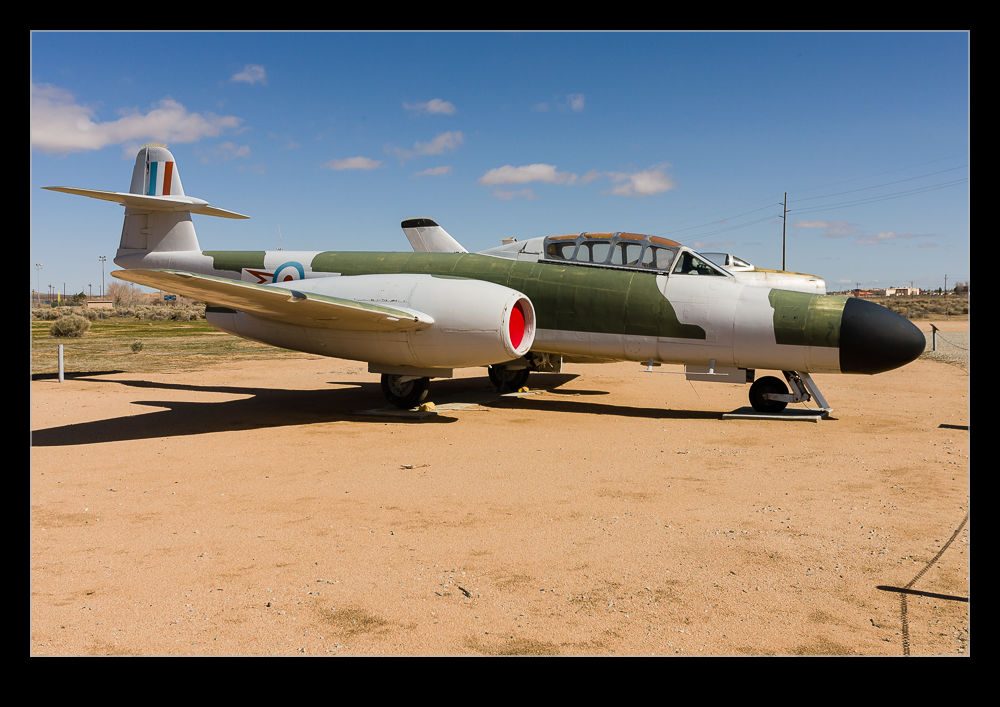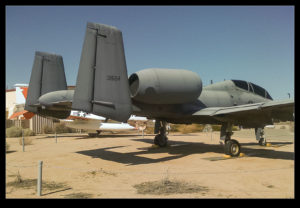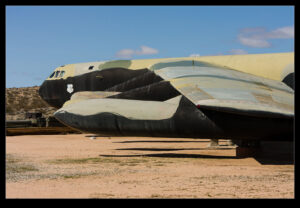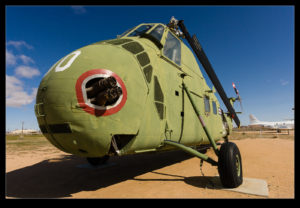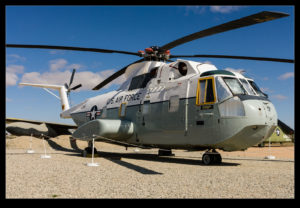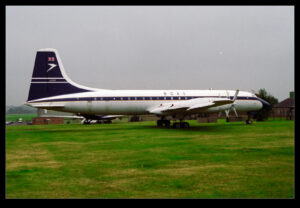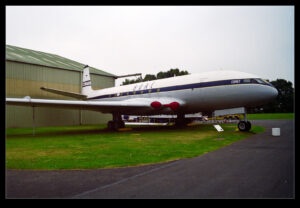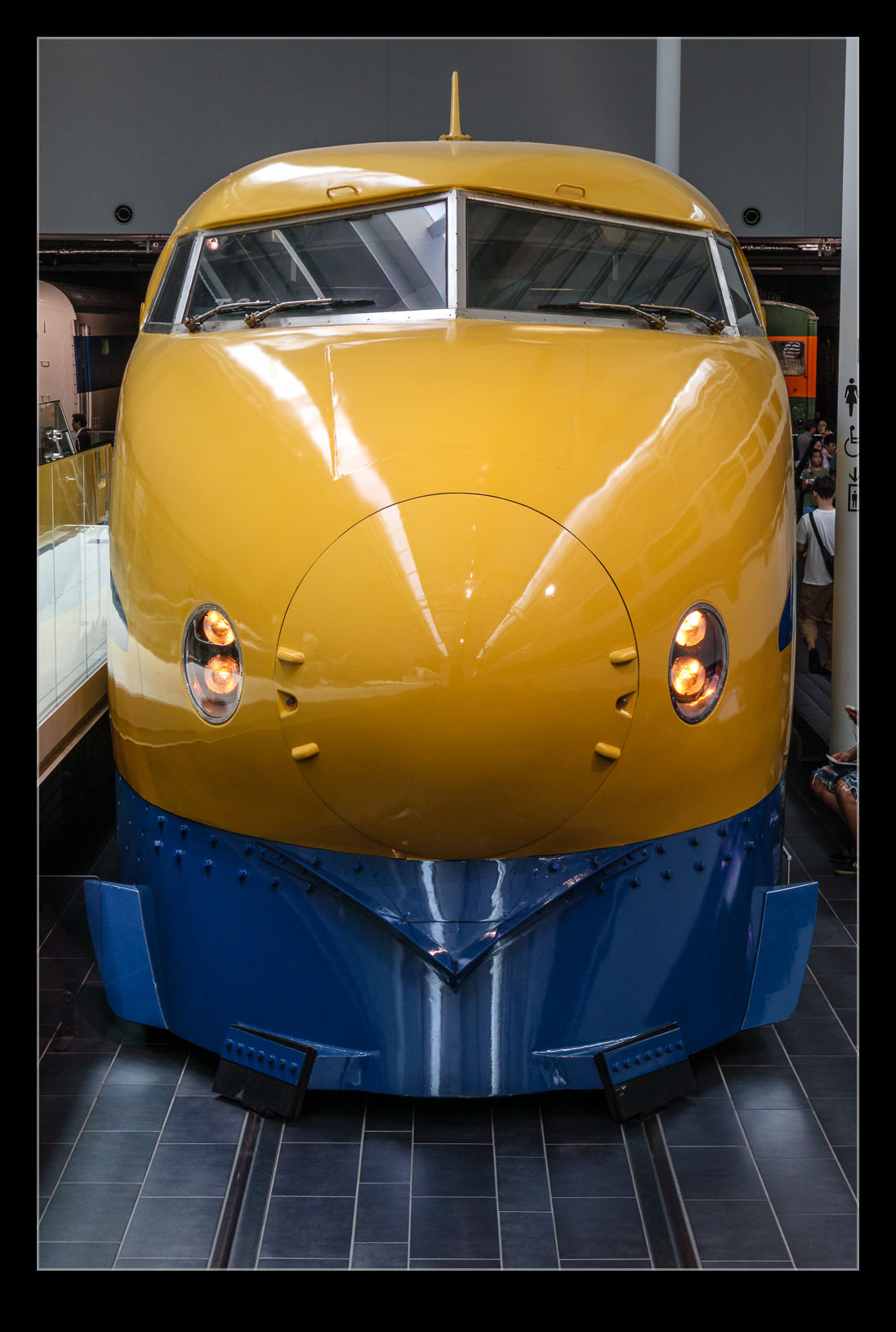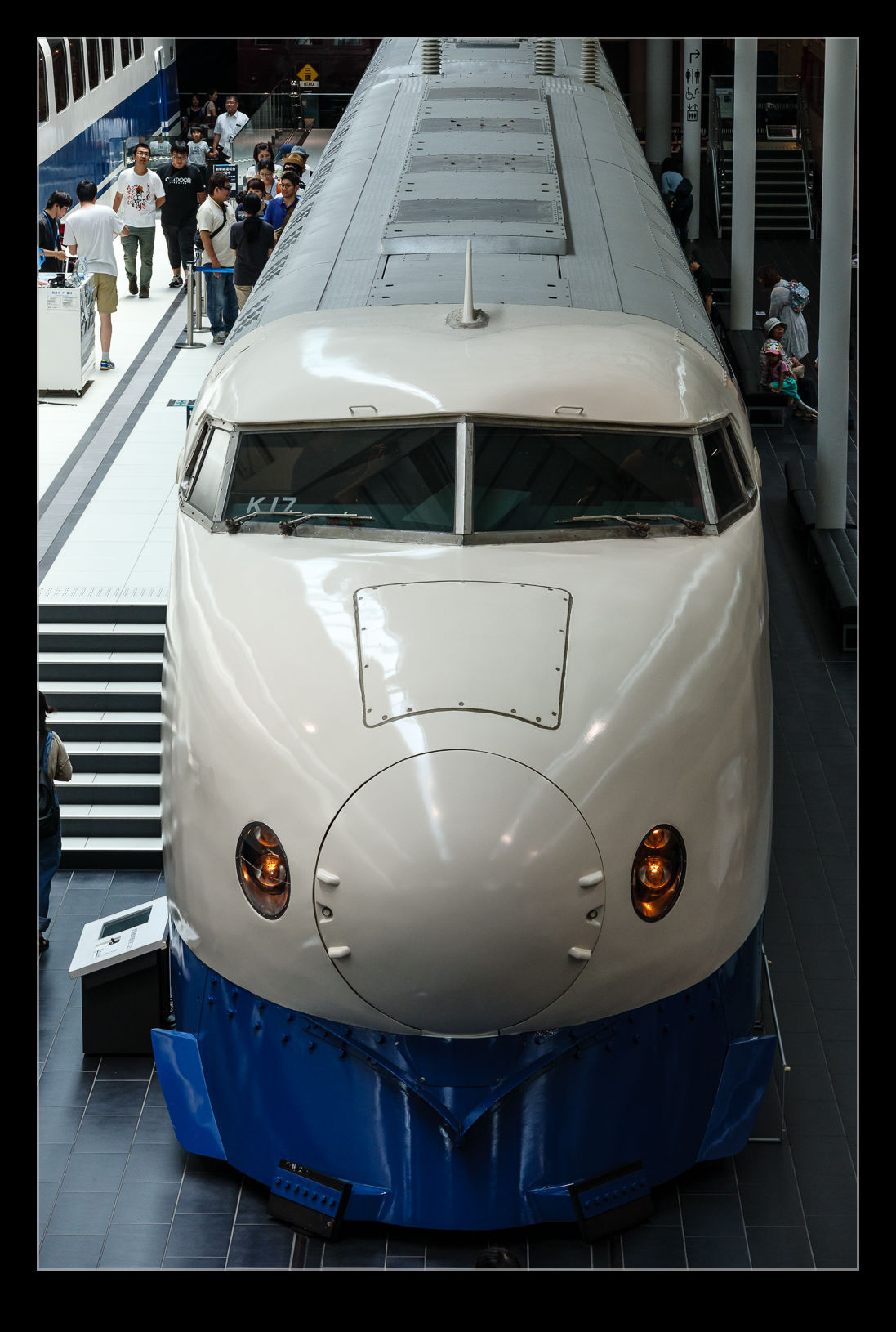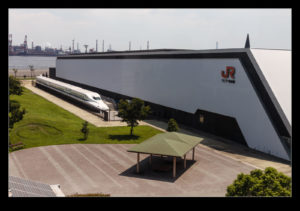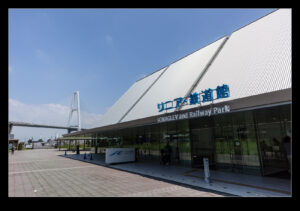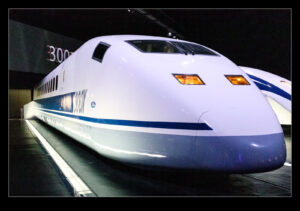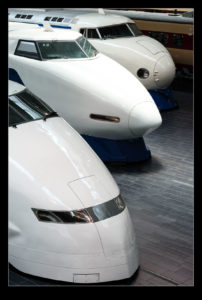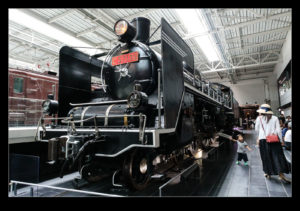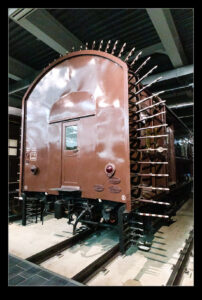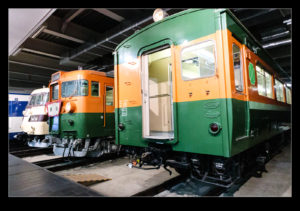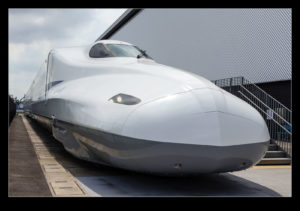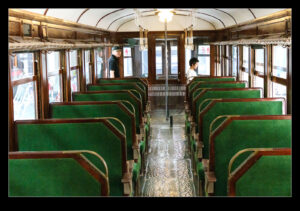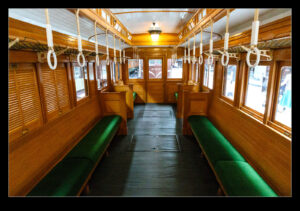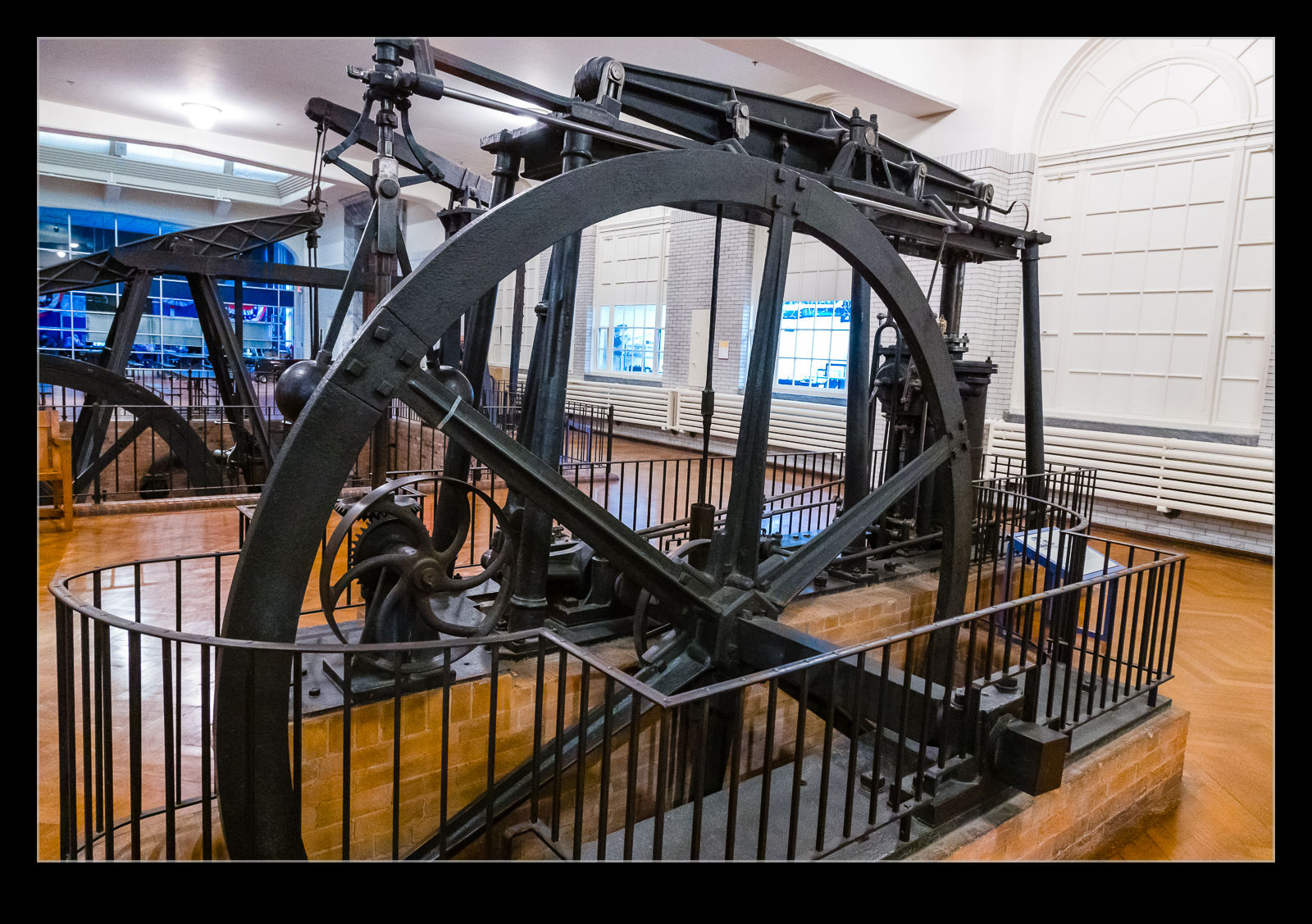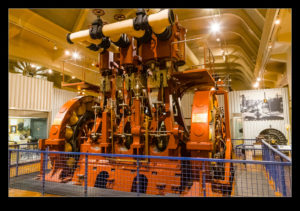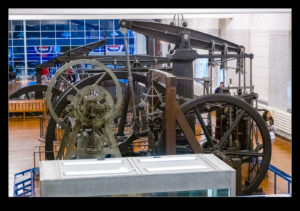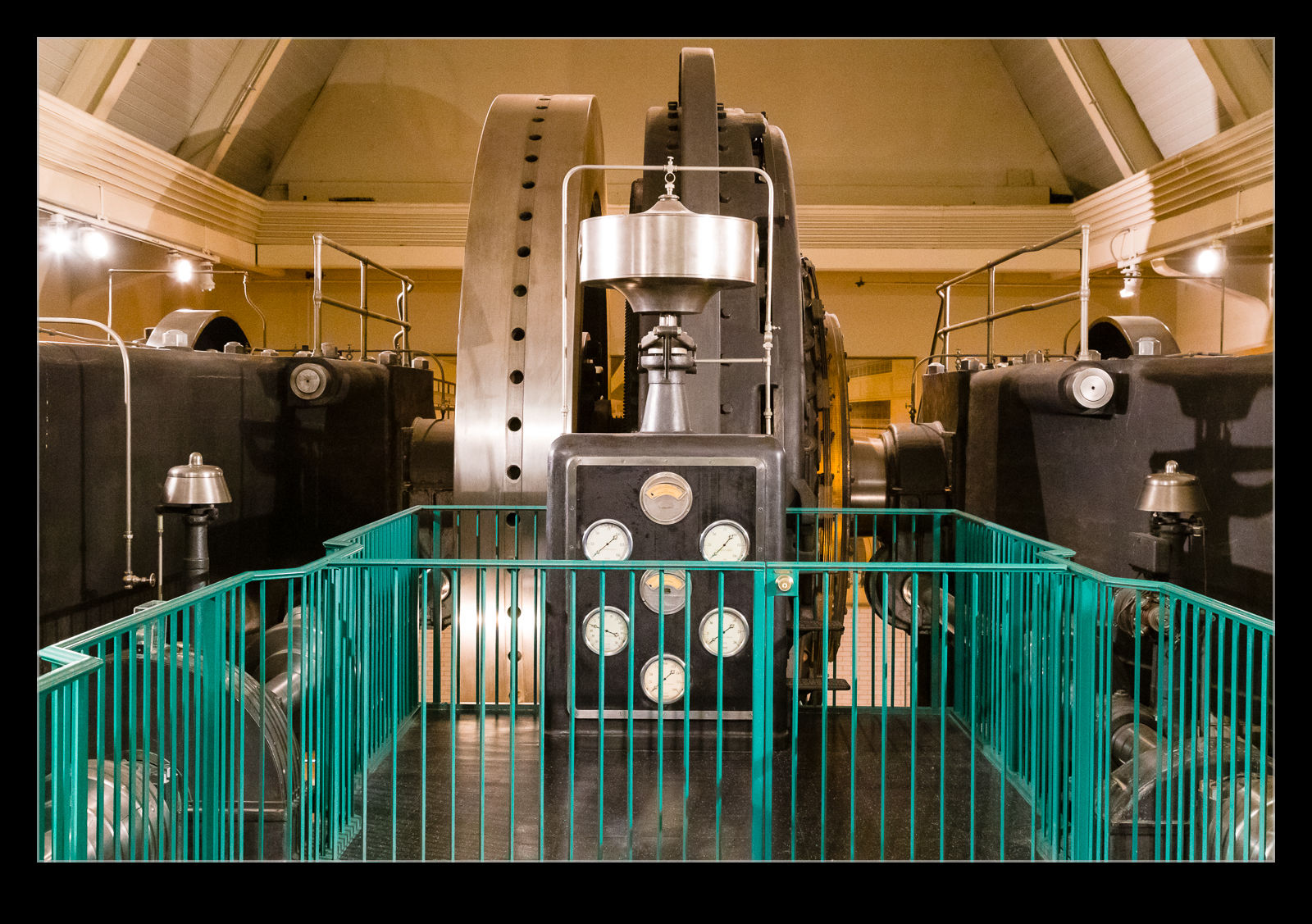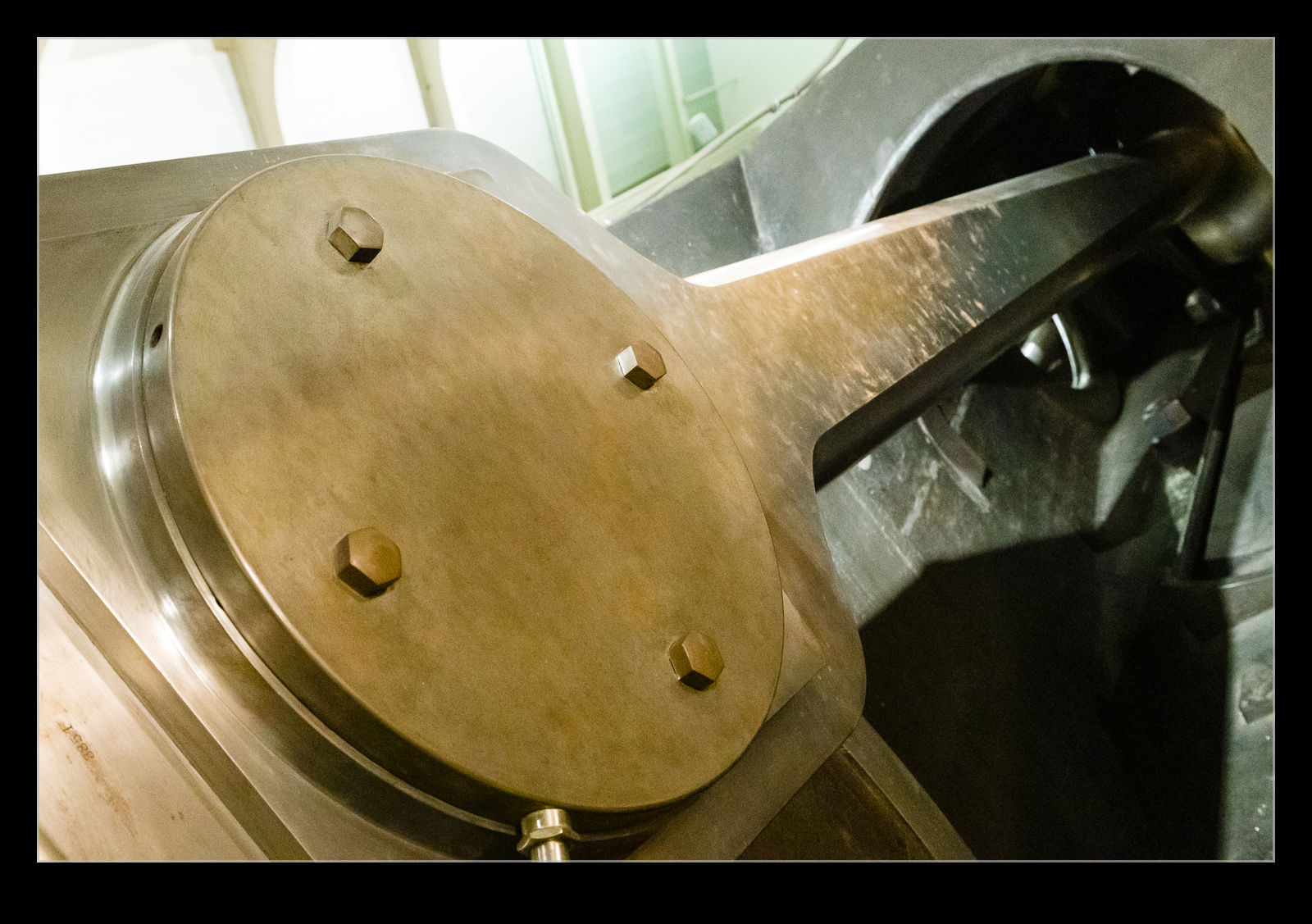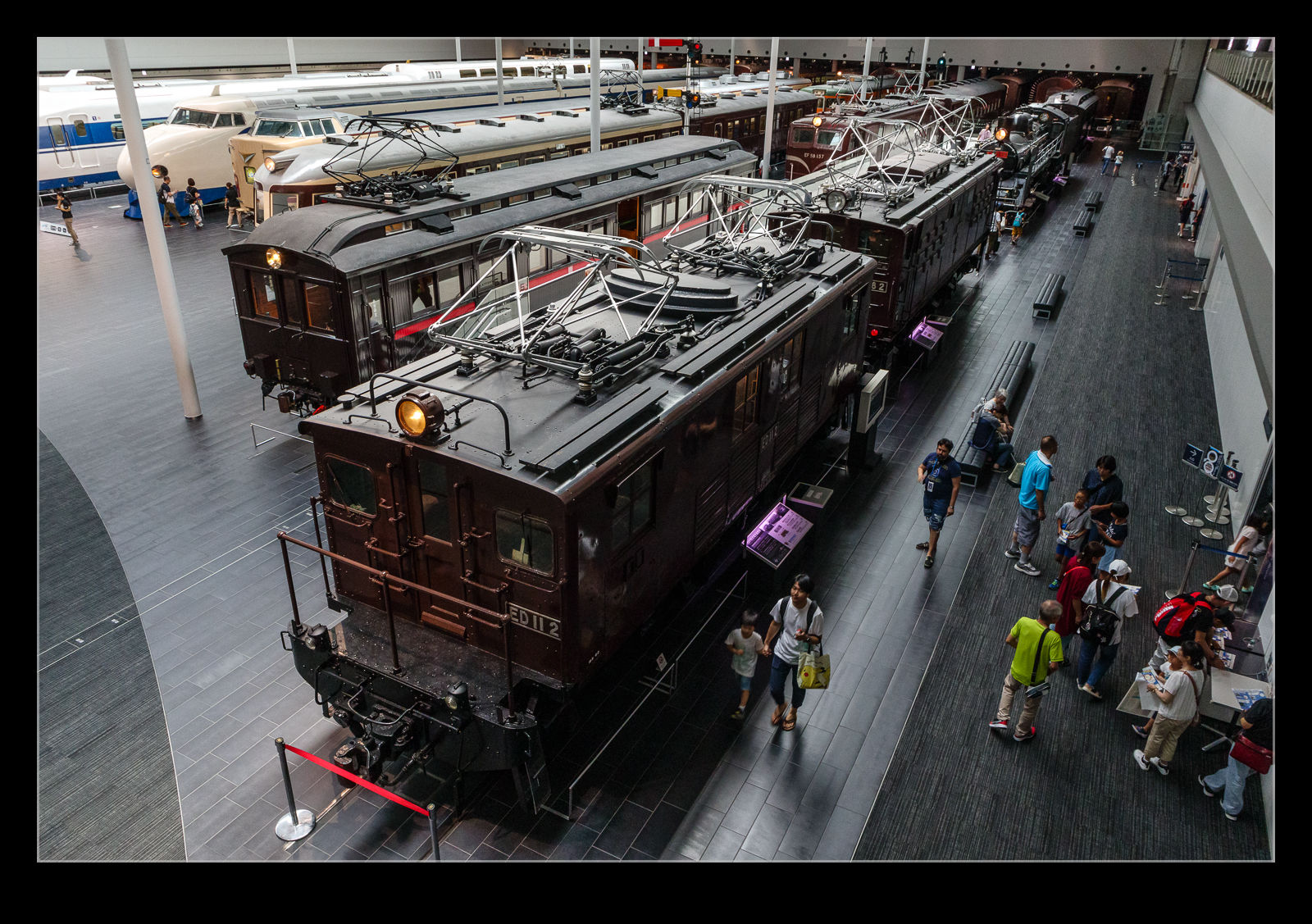 Here are some old Japanese rail vehicles. These are part of the SCMaglev museum in Nagoya that I visited when I was in Japan last summer. The museum has a great selection of Shinkansen equipment across the generations but it also has a lot of other rail vehicles from long ago. The vehicles clearly look old from the outside but the interiors are really an interesting comparison with what you see these days. The amount of wood in the paneling and the materials of the seating are definitely of their time. I was quite amused by the fans mounted on the ceiling. Obviously pre-air conditioning days with these cars and so a bit of air circulation was all you could hope for. Knowing how incredibly hot it gets in Japan during the summer, they would not have done much for the riders I would have thought. I wonder whether it was as crowded in those days as it is now. If it was even close, that would have been brutal.
Here are some old Japanese rail vehicles. These are part of the SCMaglev museum in Nagoya that I visited when I was in Japan last summer. The museum has a great selection of Shinkansen equipment across the generations but it also has a lot of other rail vehicles from long ago. The vehicles clearly look old from the outside but the interiors are really an interesting comparison with what you see these days. The amount of wood in the paneling and the materials of the seating are definitely of their time. I was quite amused by the fans mounted on the ceiling. Obviously pre-air conditioning days with these cars and so a bit of air circulation was all you could hope for. Knowing how incredibly hot it gets in Japan during the summer, they would not have done much for the riders I would have thought. I wonder whether it was as crowded in those days as it is now. If it was even close, that would have been brutal.
Tag Archives: museum
Pueblo Museum
 Well over 10 years ago, I was invited by a rail vehicle manufacturer to an industry event that they were holding to promote one of their vehicles. It was held at the TTCI test facility outside Pueblo in Colorado. Pueblo also has an aviation museum so it was inconceivable that I would go all that way and not check it out while I was there.
Well over 10 years ago, I was invited by a rail vehicle manufacturer to an industry event that they were holding to promote one of their vehicles. It was held at the TTCI test facility outside Pueblo in Colorado. Pueblo also has an aviation museum so it was inconceivable that I would go all that way and not check it out while I was there.
 Most of the exhibits are outside in some pretty harsh sun so they are rather sun-bleached. There is an interesting mix of old types on display while a few are indoors and look in better condition. Helicopters and vintage fighters are always going to be good for me so hopefully there is something in here you like.
Most of the exhibits are outside in some pretty harsh sun so they are rather sun-bleached. There is an interesting mix of old types on display while a few are indoors and look in better condition. Helicopters and vintage fighters are always going to be good for me so hopefully there is something in here you like.
The Edwards Museum
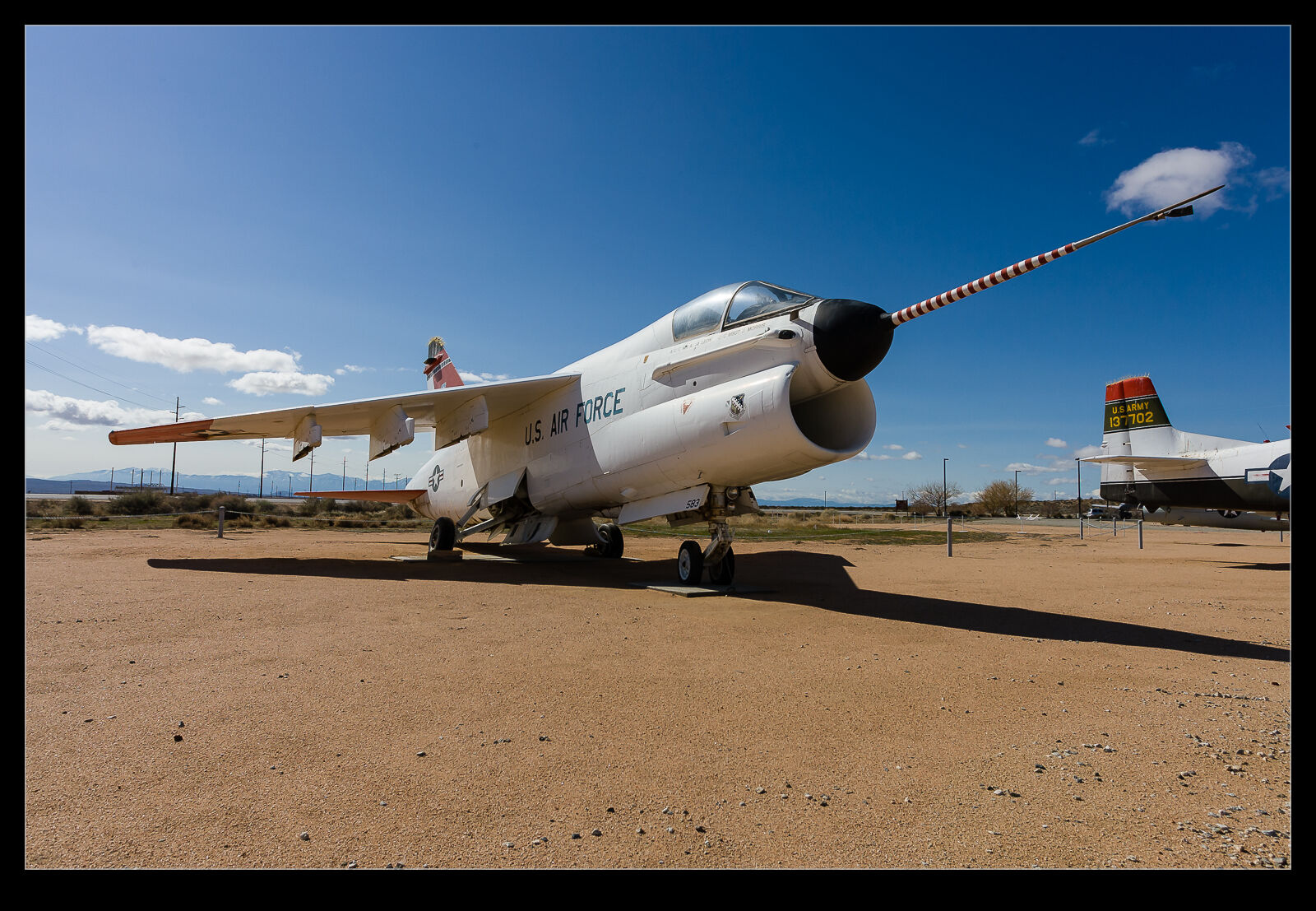 Edwards AFB has been the home to an amazing range of interesting aircraft types. Many of them have found their way to prominent museums around the country given the significance of what they achieved. Others never found interest and got disposed of. Some never lasted long enough to be preserved given the hazardous nature of what they did. However, there was a storage program for the rest and Edwards has a museum of some of these preserved airframes.
Edwards AFB has been the home to an amazing range of interesting aircraft types. Many of them have found their way to prominent museums around the country given the significance of what they achieved. Others never found interest and got disposed of. Some never lasted long enough to be preserved given the hazardous nature of what they did. However, there was a storage program for the rest and Edwards has a museum of some of these preserved airframes.
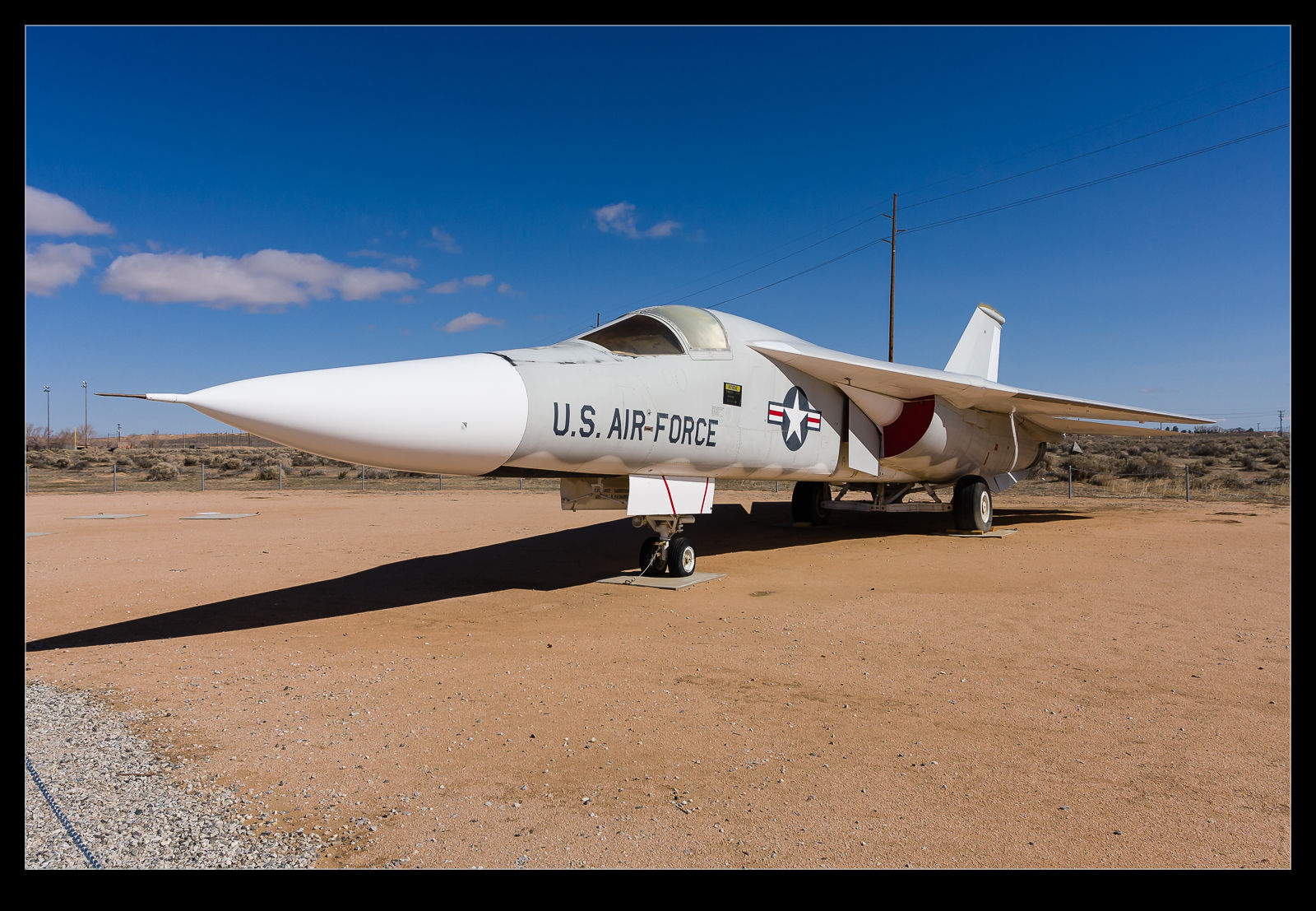 I haven’t been to Edwards for a long time so I don’t know what the current situation is with the collection but I did get to check it out on a previous visit. The collection was mainly front line types that had been used for testing purposes. (This is the USAF side of things rather than the NASA collection.) There are some types there that I didn’t see which I would like to have done like the YA-7F. However, there was a test A-7D with an air data boom. Here are some of the shots I got that day. I also shot a couple of other jets that were away from the rest but these were only with my phone and phone quality in those days was not what it is now.
I haven’t been to Edwards for a long time so I don’t know what the current situation is with the collection but I did get to check it out on a previous visit. The collection was mainly front line types that had been used for testing purposes. (This is the USAF side of things rather than the NASA collection.) There are some types there that I didn’t see which I would like to have done like the YA-7F. However, there was a test A-7D with an air data boom. Here are some of the shots I got that day. I also shot a couple of other jets that were away from the rest but these were only with my phone and phone quality in those days was not what it is now.
Cosford’s Civil Collection
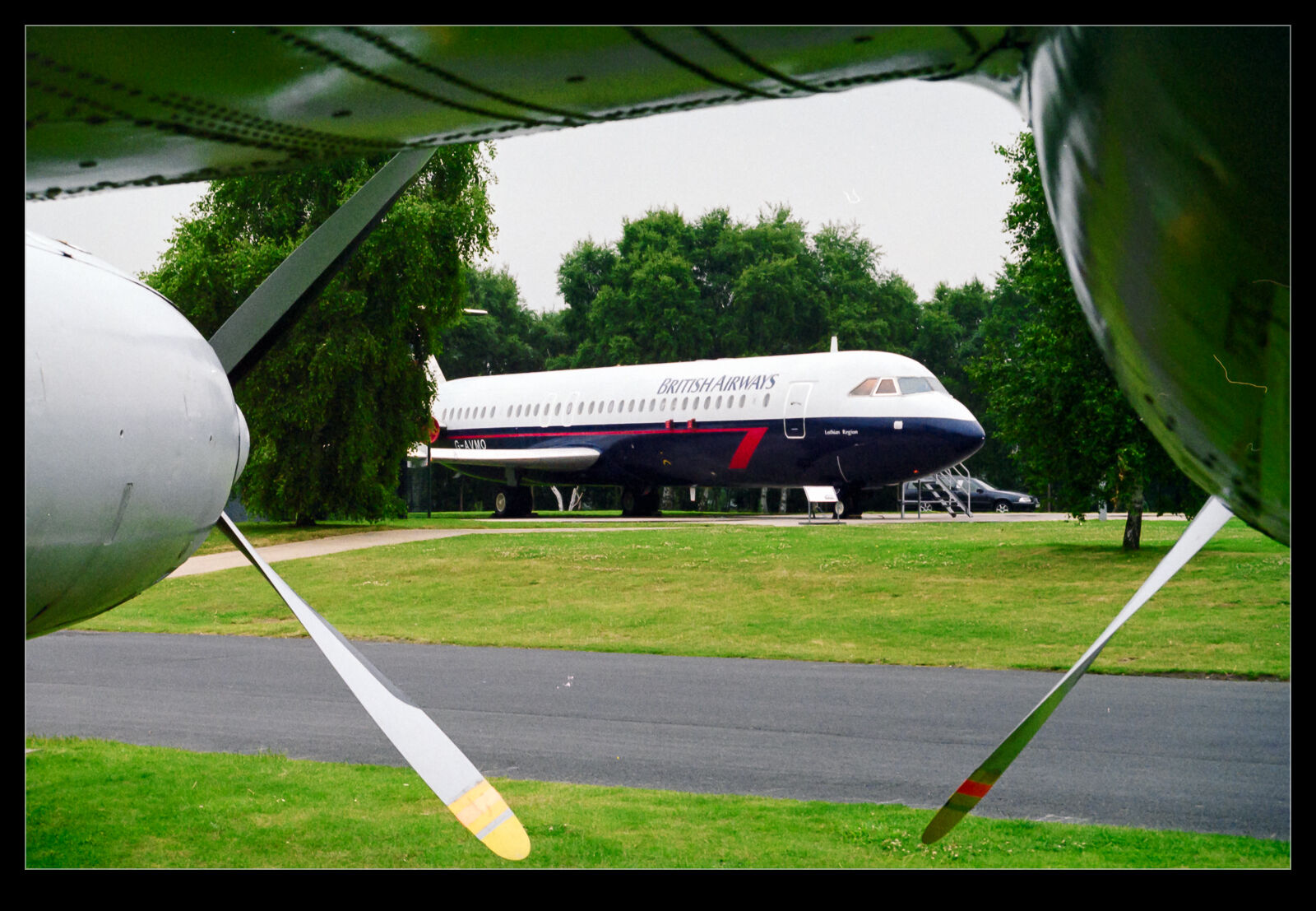 More from the film scanning archive. I made a trip to the museum at RAF Cosford when I was visiting my friends Jon and Charlie in the area. Now Jon works there but at the time it was just an extra to my visit. At the time, British Airways had a collection of aircraft at the museum. This included lots of their older types in storage. Sadly, the cost of keeping the collection was not something BA management deemed worthwhile and they stopped funding it. The museum couldn’t afford to keep them up so they were scrapped on site. I wish I had a better record of them but this is all I have. Fortunately, others will have done better recording them.
More from the film scanning archive. I made a trip to the museum at RAF Cosford when I was visiting my friends Jon and Charlie in the area. Now Jon works there but at the time it was just an extra to my visit. At the time, British Airways had a collection of aircraft at the museum. This included lots of their older types in storage. Sadly, the cost of keeping the collection was not something BA management deemed worthwhile and they stopped funding it. The museum couldn’t afford to keep them up so they were scrapped on site. I wish I had a better record of them but this is all I have. Fortunately, others will have done better recording them.
The Original Doctor Yellow
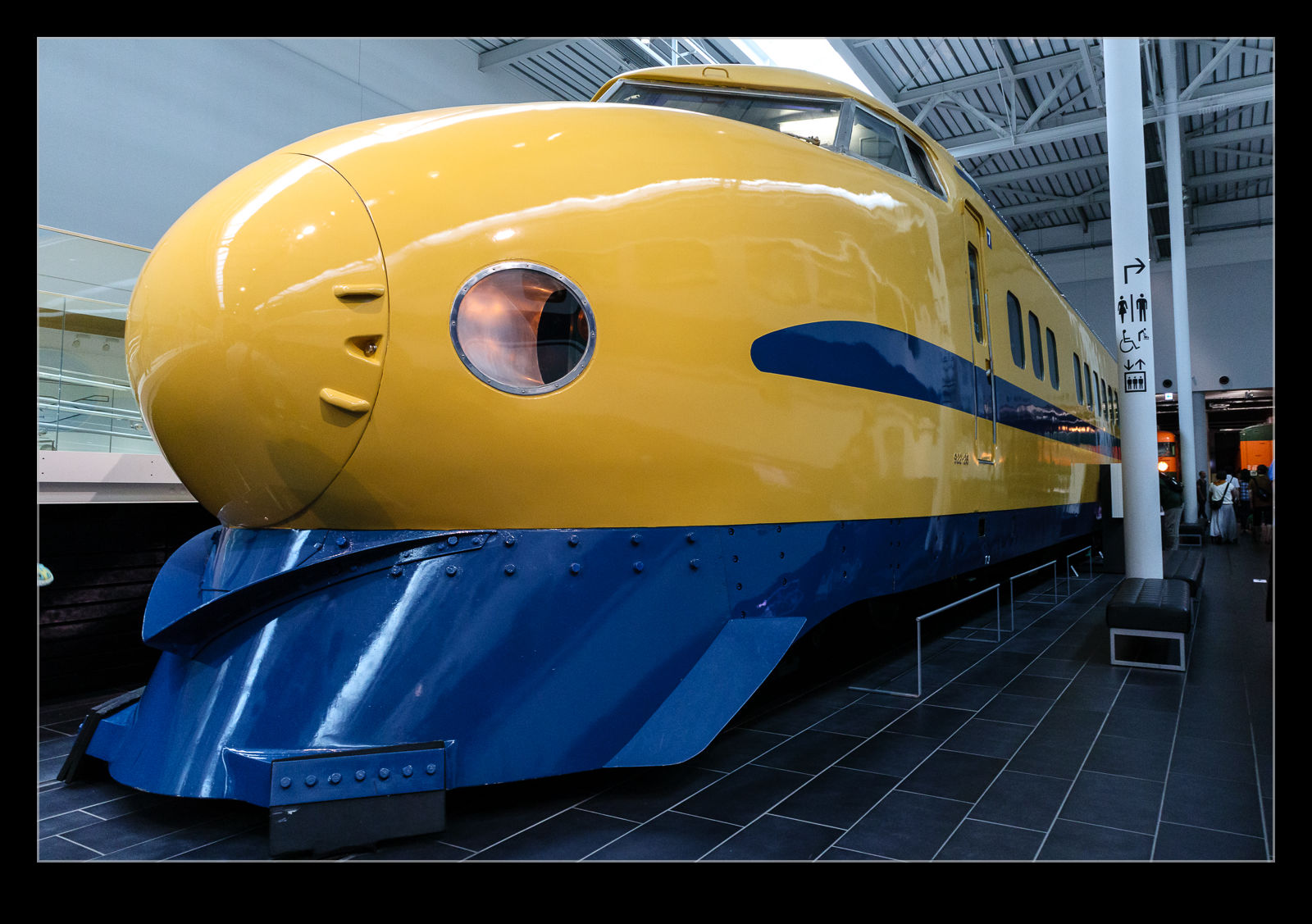 The Tokaido Shinkansen service requires regular inspection of the track to ensure it is up to the high standards required of high speed service. JRC operates an inspection train called Doctor Yellow. It is a highly instrumented version of the current trains. I have seen the current Doctor Yellow when I was at one of JRC’s maintenance facilities. However, the original Doctor Yellow was based on the Series 0 trains. It is now preserved in the SC Maglev museum in Nagoya along with many of the other Shinkansen designs.
The Tokaido Shinkansen service requires regular inspection of the track to ensure it is up to the high standards required of high speed service. JRC operates an inspection train called Doctor Yellow. It is a highly instrumented version of the current trains. I have seen the current Doctor Yellow when I was at one of JRC’s maintenance facilities. However, the original Doctor Yellow was based on the Series 0 trains. It is now preserved in the SC Maglev museum in Nagoya along with many of the other Shinkansen designs.
The Train That Started It All
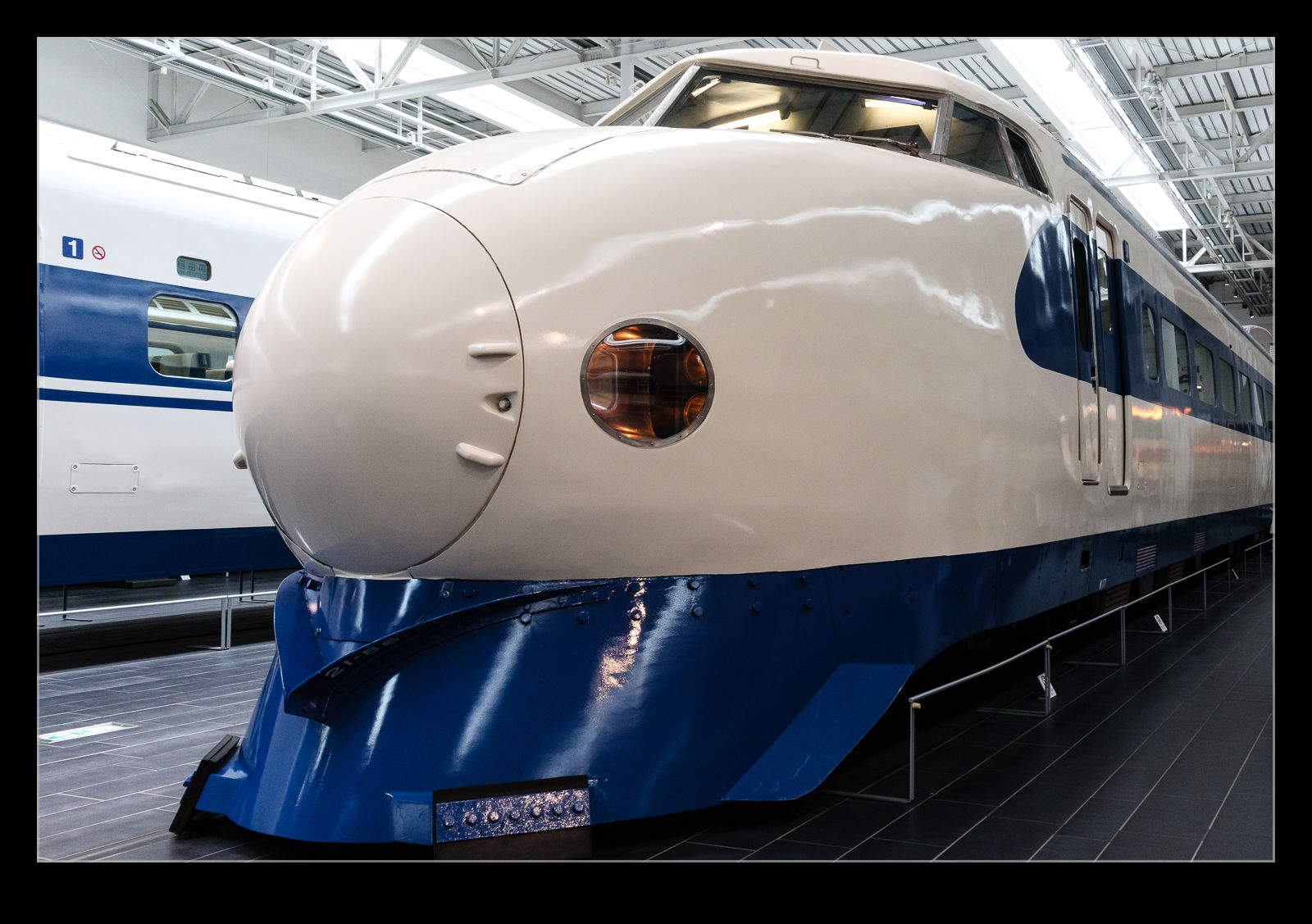 The Japanese Shinkansen trains introduced in the 1960s became known around the world as bullet trains. The shape of them was well known, often photographed with Mt Fuji in the background. While other countries developed high speed rail, the Japanese bullet train was often the first one people would associate with the topic. These first trains are known as the Series 0. There have been several iterations of design since. However, the Series 0 is still very recognizable to me and probably others of my generation.
The Japanese Shinkansen trains introduced in the 1960s became known around the world as bullet trains. The shape of them was well known, often photographed with Mt Fuji in the background. While other countries developed high speed rail, the Japanese bullet train was often the first one people would associate with the topic. These first trains are known as the Series 0. There have been several iterations of design since. However, the Series 0 is still very recognizable to me and probably others of my generation.
 I had seen a Series 0 vehicle once before. I visited the Nippon Sharyo factory is Toyokawa many years ago and they have a cab vehicle on display by the main gate. Sadly, I wasn’t able to get a photograph of that then. Seeing an example at the SC Maglev museum was my second opportunity. It was displayed alongside a number of the more recent iterations of the Shinkansen but, judging by the number of people taking photos of it, it still has a strong level of recognition.
I had seen a Series 0 vehicle once before. I visited the Nippon Sharyo factory is Toyokawa many years ago and they have a cab vehicle on display by the main gate. Sadly, I wasn’t able to get a photograph of that then. Seeing an example at the SC Maglev museum was my second opportunity. It was displayed alongside a number of the more recent iterations of the Shinkansen but, judging by the number of people taking photos of it, it still has a strong level of recognition.
SC Maglev Museum
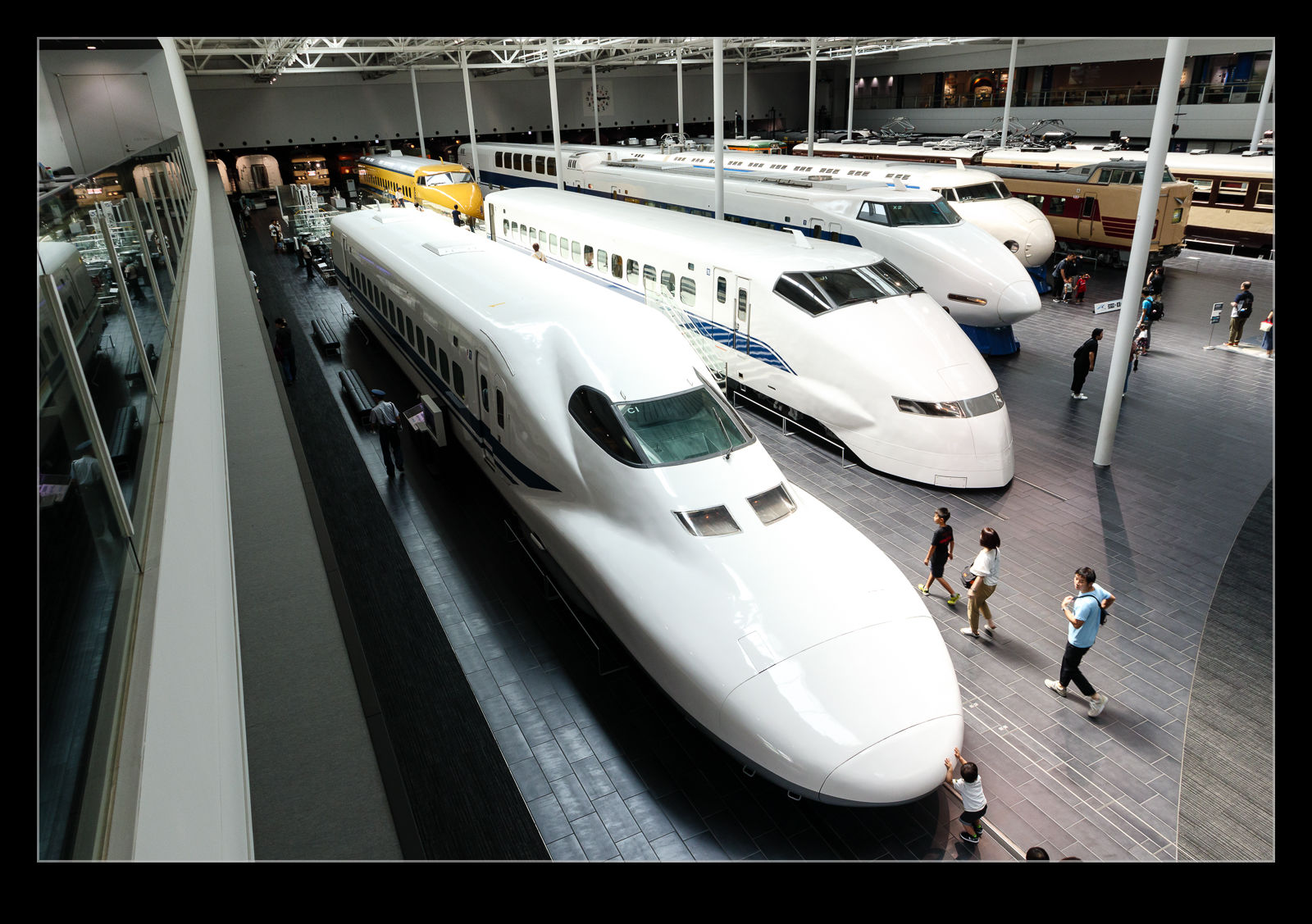 Nagoya is home to a museum of Japanese rolling stock. The museum name focuses on Maglev technology and there is a Maglev prototype in the museum. However, the exhibits are really a cross section of the Japanese rail industry over the years. I will probably post some more from the museum as there were quite a few interesting exhibits. Most of it was inside – most welcome on such a hot day – but the N700 prototype was outside. I did have a look at that briefly along with an old steam locomotive but I was soon driven back inside by the temperatures.
Nagoya is home to a museum of Japanese rolling stock. The museum name focuses on Maglev technology and there is a Maglev prototype in the museum. However, the exhibits are really a cross section of the Japanese rail industry over the years. I will probably post some more from the museum as there were quite a few interesting exhibits. Most of it was inside – most welcome on such a hot day – but the N700 prototype was outside. I did have a look at that briefly along with an old steam locomotive but I was soon driven back inside by the temperatures.
 When I first got there, you are directed into a hall with three significant exhibits. It was so dark, I was wondering whether there would be any decent photo opportunities. However, this was just the initial introduction and there were periodic videos and light shows to allow you to see these exhibits more clearly. A little patience was required. The main hall had the majority of the exhibits and they were lit normally. There were plenty of people in the museum taking pictures with small children that didn’t seem to be enjoying it as much as the parents would have liked! Maybe they wanted to be at Legoland across the street?
When I first got there, you are directed into a hall with three significant exhibits. It was so dark, I was wondering whether there would be any decent photo opportunities. However, this was just the initial introduction and there were periodic videos and light shows to allow you to see these exhibits more clearly. A little patience was required. The main hall had the majority of the exhibits and they were lit normally. There were plenty of people in the museum taking pictures with small children that didn’t seem to be enjoying it as much as the parents would have liked! Maybe they wanted to be at Legoland across the street?
Big Steam Engines
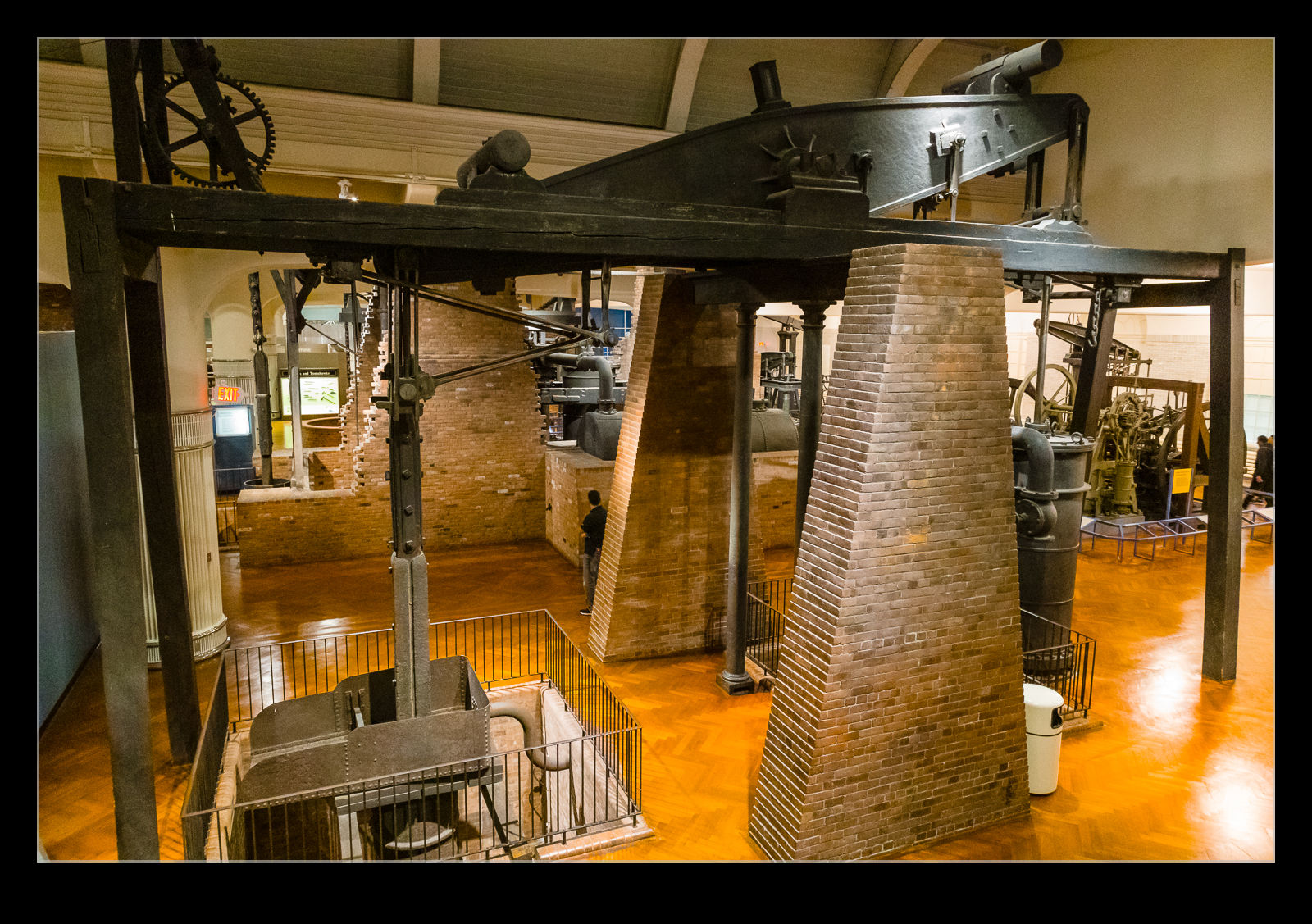 In the days of steam, power was produced by huge machines. If you needed a more powerful machine, you just made it bigger. The huge wheels and pistons that resulted were most impressive. The Henry Ford has quite a selection of these old steam engines of various designs. The efficiency improved as they introduced multiple phases to the machines to recover more work from the output of the engine. The big beams and pistons remained a theme, though. The large brick structures and the associated metalwork have been nicely preserved and displayed.
In the days of steam, power was produced by huge machines. If you needed a more powerful machine, you just made it bigger. The huge wheels and pistons that resulted were most impressive. The Henry Ford has quite a selection of these old steam engines of various designs. The efficiency improved as they introduced multiple phases to the machines to recover more work from the output of the engine. The big beams and pistons remained a theme, though. The large brick structures and the associated metalwork have been nicely preserved and displayed.
Power for a Factory
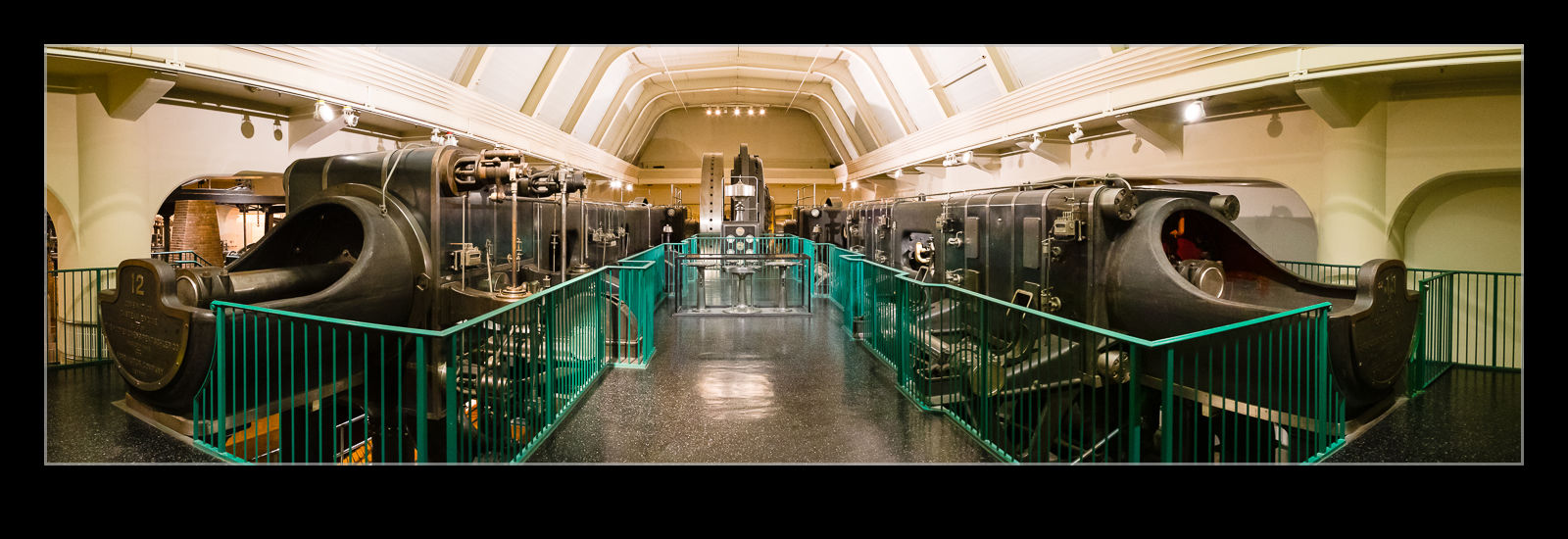 The Dearborn factory required a large power generation facility and, in days gone by, this was provided by a large steam engine driving generators. This machine is now nicely preserved. The scale of it is a bit hard to represent. The cylinders are huge and the controls are substantial. You can climb up on top of the whole thing to see how it went together. Surprisingly, this is not a place that was getting too many visitors which meant I was able to nose around in relative peace. It is hard to imagine what it would have been like when this enormous piece of engineering was in use and was generating the power for the plant. Now it is idle but it still looks imposing.
The Dearborn factory required a large power generation facility and, in days gone by, this was provided by a large steam engine driving generators. This machine is now nicely preserved. The scale of it is a bit hard to represent. The cylinders are huge and the controls are substantial. You can climb up on top of the whole thing to see how it went together. Surprisingly, this is not a place that was getting too many visitors which meant I was able to nose around in relative peace. It is hard to imagine what it would have been like when this enormous piece of engineering was in use and was generating the power for the plant. Now it is idle but it still looks imposing.
Quite a Locomotive
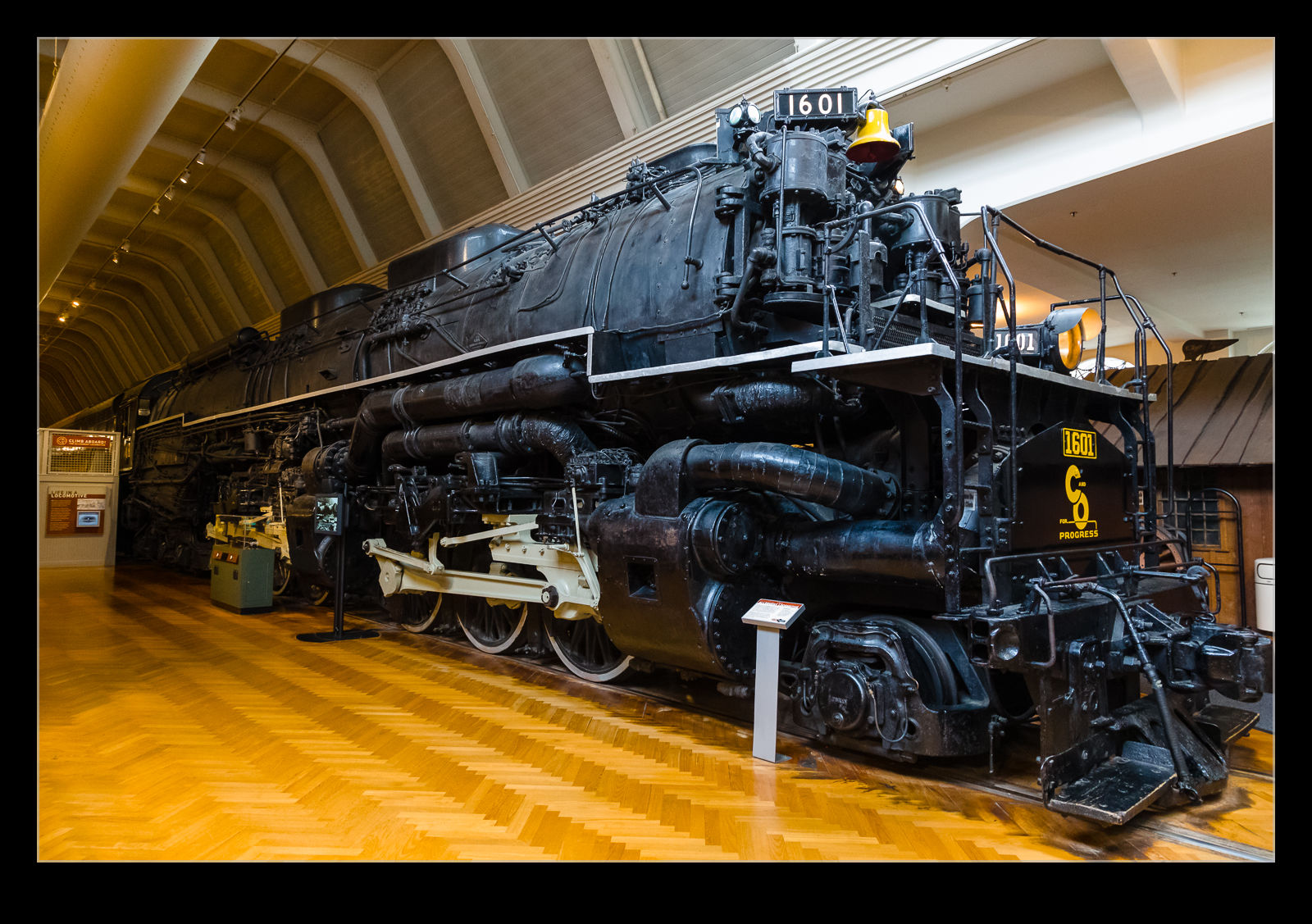 I know a few of the regular readers of the blog are in to trains so I hope this one pleases them. The Henry Ford Museum covers all sorts of engineering endeavors including a selection of rail vehicles. This was one of the last things we saw before we left so I didn’t explore very much. However, there was one rather large steam locomotive on display. This thing was a beast and I imagine it was quite the sight when it was in regular usage. Our visit coincided with the running of Big Boy after restoration so something similar to this can been seen for real once again!
I know a few of the regular readers of the blog are in to trains so I hope this one pleases them. The Henry Ford Museum covers all sorts of engineering endeavors including a selection of rail vehicles. This was one of the last things we saw before we left so I didn’t explore very much. However, there was one rather large steam locomotive on display. This thing was a beast and I imagine it was quite the sight when it was in regular usage. Our visit coincided with the running of Big Boy after restoration so something similar to this can been seen for real once again!
